SF Bay Area building demolition fuels quake study (Update)
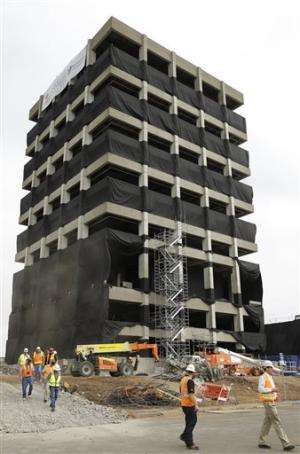
It took just seconds for a 13-story building overlooking San Francisco Bay to implode, spewing smoke and chunks of concrete as it crumbled into a heap of rubble. But U.S. Geological Survey scientist Rufus Catchings was marveling less at the visual spectacle than what he could feel with his feet.
As the building collapsed, the vibrations Catchings noted told him that a novel experiment to study one of the most dangerous fault lines in the U.S. likely was a success.
"I was trying to sense the seismic energy on the ground," Catchings said.
On Saturday, workers imploded Warren Hall, for four decades a fixture of the East Bay hillsides and the Cal State East Bay campus.
The boxy building was built roughly 2,000 feet (600 meters) from the Hayward fault, and officials recently deemed it seismically unsafe. Scientists turned its destruction into a valuable tool in their ongoing efforts to understand the earthquakes that have shaped California.
At precisely 9 a.m. a series of explosives went off with deafening bangs, as the building shook and then slumped. Then Warren Hall crumbled into a 12,500-ton pile of concrete and steel.
Scores of onlookers cheered.
The impact sent shockwaves that researchers hoped would mimic a magnitude-2.0 earthquake. Scientists had placed more than 600 miniature seismographs in concentric circles within a mile (1.6 kilometers) of the building to collect data they will use in their studies.
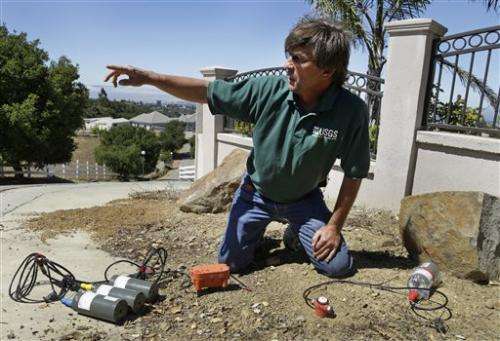
"This will tell us a lot about the fault zone itself, of the amplitude of seismic energy we expect from a real earthquake," Catchings said.
The USGS estimates there is a 63 percent chance of a major earthquake in the Bay Area within the next three decades.
The Hayward fault, which runs through several East Bay cities and under the football stadium at the University of California, Berkeley, is the most likely of the handful of Bay Area fault lines to move.
USGS scientists hope that Saturday's seismic-like shaking will help them map where the ground might move the most when the big one hits.
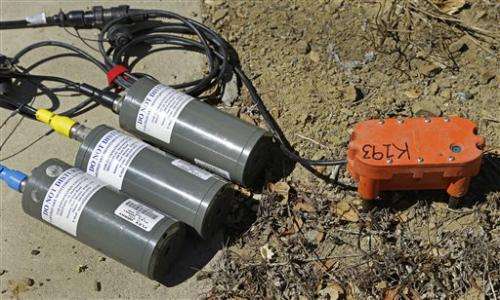
It's not just the main fault line that concerns scientists and nearby residents. Additional lines—called traces—split off from the main fault, and the location of many are unknown. The vibrations set off by Warren Hall's implosion will help scientists figure out where they are.
"In the event of a large earthquake, often times it's not just one break in the ground, it's spread out over some distance," Catchings said. "You'd kind of like to know where all these things are if you really want to understand the hazard."
Analyzing the data likely will take months.
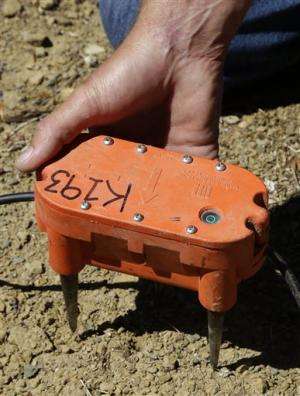
Many people vividly remember the magnitude-6.9 Loma Prieta earthquake in 1989 that killed 63 people, injured almost 3,800 and caused up to $10 billion in damage, including a collapsed freeway that killed dozens of drivers. That quake was centered near Santa Cruz, about 50 miles (80 kilometers) south of Hayward.
But the last major earthquake on the Hayward fault was in 1868, Catchings said. He said the fault triggers a major earthquake every 140 years on average.
Mark Salinas, Hayward's mayor pro tem, said knowing where the ground shakes will help the city decide where to put new housing and other buildings. "This data, when it's available, will inform us on future development," he said.
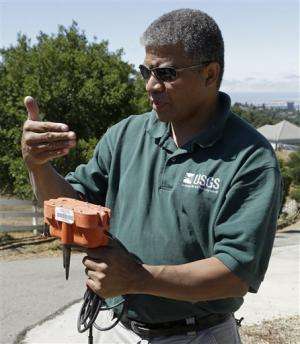
The idea to use the building's demolition came from Luther Strayer, an associate professor of geology at the university who called USGS officials to see if they would be interested.
After the implosion, Strayer said he was more than optimistic about the possible results.
"We really couldn't ask for better," he said.
© 2013 The Associated Press. All rights reserved.
















